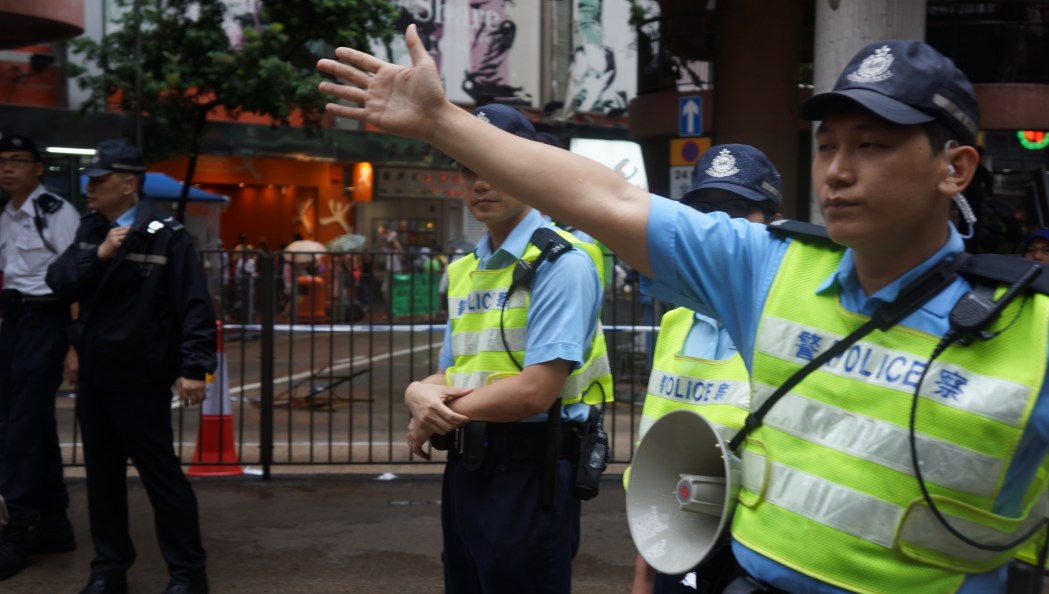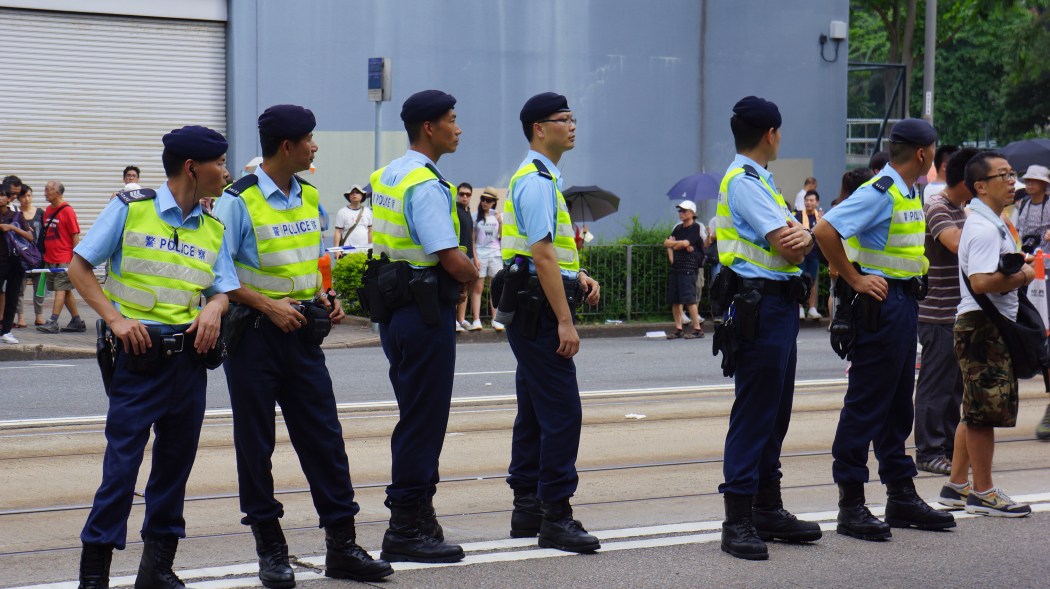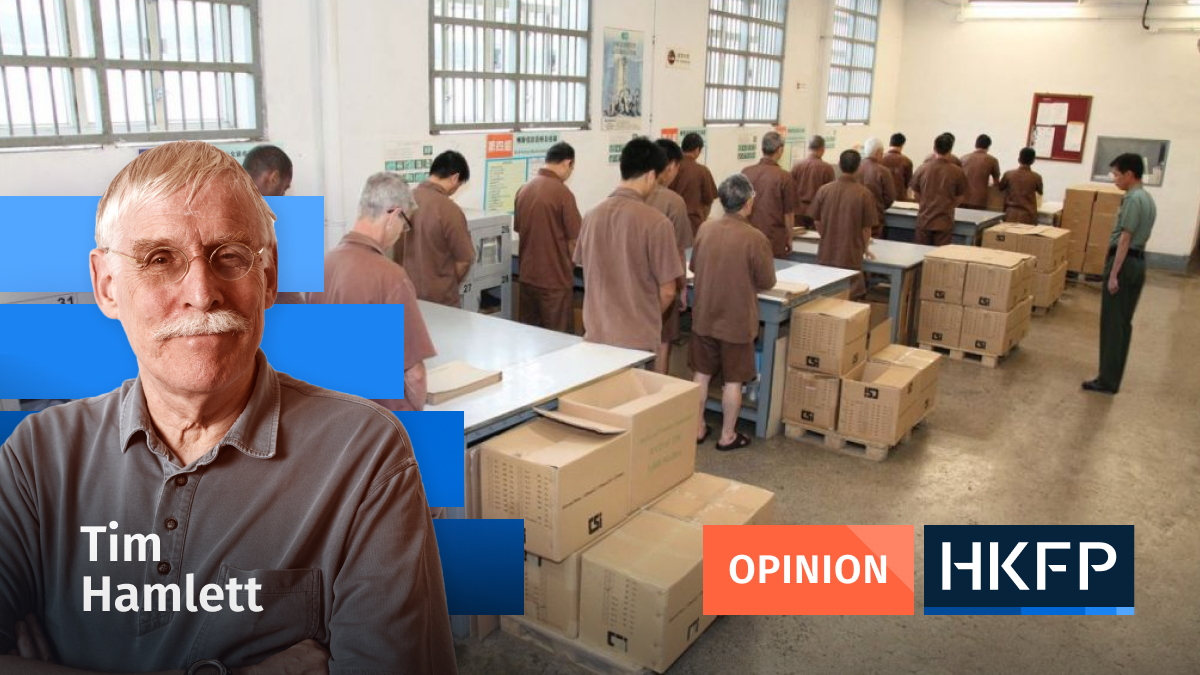The demise of the Civil Human Rights Front (CHRF), an umbrella body which had organised all major protests in Hong Kong since 2002, marks the end of the story of the city’s peaceful protests. Worse and more sadly, it signifies the decline of the city as a whole and the end of the “one country, two systems” experiment.
Citing unprecedented challenges faced by civil society, the CHRF announced in a statement on Sunday that it had decided to disband. Five days earlier the Professional Teachers’ Union, the city’s largest teachers’ body, had announced its own closure after citing political attacks that came from “all directions.”

Shortly after the CHRF issued its statement, police were quick to warn that disbandment was not the end of the story. They vowed to actively investigate whether the group had breached the Societies Ordinance, insisting it had operated unlawfully since it was founded in 2002.
A police spokesman said the force would take legal action against any groups found to have breached the national security law and other laws, regardless of whether they had disbanded.

Police did not explain why they had given approval for the holding of protests and rallies by the CHRF since 2002. It had also been normal for police to put their heads together with the protest organisers to work out details such as the route of the rally and crowd control.
It was only recently that police said the group had neither registered under the Companies Register nor the Societies Ordinance and its activities could be unlawful.
Never mind that those protests, including the landmark 500,000-strong rally on July 1 in 2003 and the two massive rallies in 2019, which saw an estimated one million and two million people taking part, were held after police issued a permit of no-objection.

More intriguingly, Chief Executive Carrie Lam Cheng Yuet-ngor, like her predecessors, had given post-rally statements responding to the demands made by the protesters at those events. There was no question at the time about their legality.
In 2014, the then-chief executive Leung Chun-ying said after a rally held by the CHRF: “Friends from CHRF and other groups who organised this rally, you guys had worked hard.”
Leung was telling the truth when he addressed the coalition as “friends.” Flying the banner of peaceful and lawful protest, it had provided a platform for people to express their views in peaceful organised marches.

The July 1 march had become an annual occasion for civil society groups to come out to express their hopes and fears over a litany of issues ranging from democratic development, conservation and poverty to sub-divided flats and ethnic minorities’ rights.
The fact that people were allowed to take to the streets in an orderly and peaceful manner, while police exercised restraint and facilitated the expression of dissenting views, was the best publicity for “one country, two systems.”
Without exception, the city’s chief executives cited the increased number of rallies and demonstrations to silence critics and cynics who forecast doom and gloom under communist rule.

The Hong Kong story in the post-colonial era had been scripted under the framework of “one country, two systems” as an important part of the overall China story.
As China grows stronger, the ruling Chinese Communist Party is keen to tell the world the story of its peaceful rise.
Allowing capitalist Hong Kong to retain its lifestyle and freedoms, along with an incremental development of democratic elections on the communist-ruled landmass, could not have been a better public relations exercise to portray a “credible, loveable and respectable China,” in the recent phrase of Xi Jinping.
Seen from that light, it could not be more ironic that China is now telling a vastly different Hong Kong story of its own creation – the story of the city’s decline.
In a stark resemblance to the death of the Professional Teachers’ Union, the disbandment of the CHRF followed a hostile blitz from China’s official media and their mouthpieces in Hong Kong.

As if they had taken orders from the propaganda machine, the entire government led by Mrs Lam, with the aid of top officials and police, acted swiftly to label the PTU and CHRF as “tumours” and the like.
That could not be a worse way to tell the China story. As the world watches the transformation of Hong Kong under communist rule, the nation’s image can hardly be “credible, lovable and respectable.”
Support HKFP | Policies & Ethics | Error/typo? | Contact Us | Newsletter | Transparency & Annual Report | Apps
| HKFP is an impartial platform & does not necessarily share the views of opinion writers or advertisers. HKFP presents a diversity of views & regularly invites figures across the political spectrum to write for us. Press freedom is guaranteed under the Basic Law, security law, Bill of Rights and Chinese constitution. Opinion pieces aim to point out errors or defects in the government, law or policies, or aim to suggest ideas or alterations via legal means without an intention of hatred, discontent or hostility against the authorities or other communities. |
Help safeguard press freedom & keep HKFP free for all readers by supporting our team

More HKFP OPINION:
HKFP has an impartial stance, transparent funding, and balanced coverage guided by an Ethics Code and Corrections Policy.
Support press freedom & help us surpass 1,000 monthly Patrons: 100% independent, governed by an ethics code & not-for-profit.










